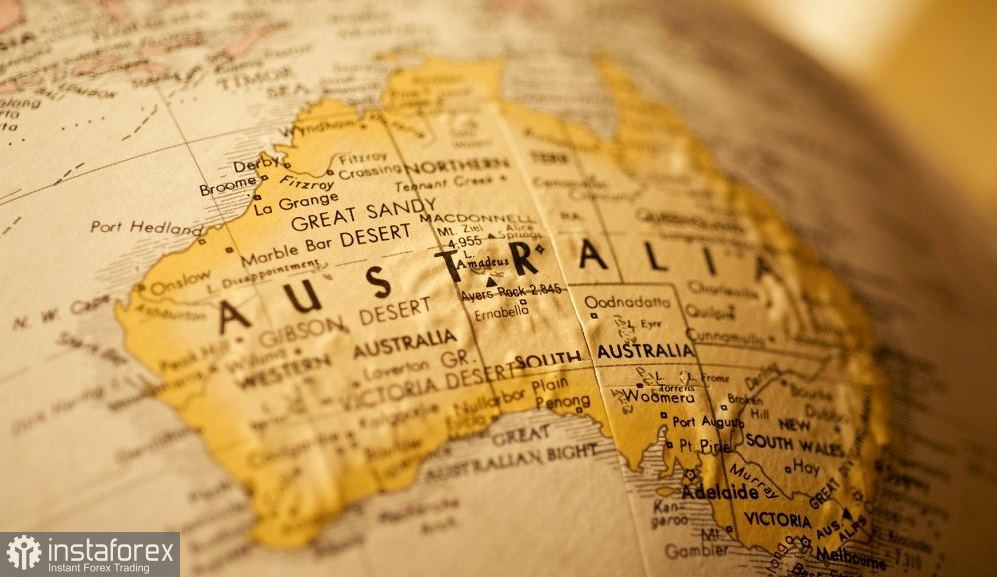Despite the US dollar's overall market weakness this week, the Australian dollar plunged when paired with the US currency. So, on December 6, the day before the RBA's December meeting, the AUD/USD pair updated the local high by rising to a level of 0.6855. The sellers took control, though, and yesterday they updated the weekly low to 0.6686. The RBA meeting and the publication of information on the expansion of the Australian economy in the third quarter were responsible for the nearly 200-point spike in the south. The AUD/USD pair would likely be at least at the base of the 66th figure right now if it weren't for the US dollar's decline. However, the dollar served as a lifeline in this situation, enabling buyers of the AUD/USD to plan a corrective counterattack.

But let's go back to the fundamentally important factors that significantly affected the Australian dollar. It is important to note that the chief of the Reserve Bank of Australia did not implement the scenario that experts had previously deemed to be the most "dovish" or one of the most likely. The regulator has been subtly alerting traders for several months that the Central Bank will probably hold off on raising rates for the time being. For instance, according to the minutes of the most recent RBA meeting, the regulator's members still needed to simultaneously rule out returning to the 50-point rate increase rate or postponing the process of tightening monetary policy. Several management representatives of the Central Bank delivered the pertinent messages. Speaking in the Australian parliament in November, Michele Bullock, the deputy head of the RBA, stated that the central bank "is approaching the moment when it will be possible to pause." A similar scenario was also not ruled out by Philip Lowe, the Reserve Bank's governor, albeit in a rather veiled manner.
Experts predicted that the RBA leadership would "directly" permit a pause in rate increases at the beginning of 2023 at the December meeting, taking into account such prior statements and other dovish-leaning conditions.
But it didn't go like that. The Australian regulator raised the interest rate by 25 basis points, which fully supported the experts' prediction in this section. Philip Lowe, however, avoided making any indications at the final press conference regarding a potential pause in tightening monetary policy.
Given that the alarming predictions of AUD/USD buyers were unfounded, this situation could support the Australian dollar. There is one "but" in this sentence, which is found in the accompanying statement from the RBA. Philip Lowe avoided mentioning the possibility of pausing, but based on the final communique's rhetoric, it appears that the Reserve Bank of Australia does not disagree with the general assessment of the majority of experts that the Central Bank will continue to take a wait-and-see approach for the foreseeable future. The foreign exchange market needs to pay more attention to the fact that this will occur a little later than anticipated.
And that is why the report on the Australian economy's expansion, released the day after the RBA meeting, was met with a strong response from traders. The lackluster release "brought closer" the potential pause date and brought back the "dovish" sentiment in the market. Aussie was under pressure, and it was only because of a weak dollar that buyers of AUD/USD managed to keep the pair above the 67th percentile and even organize a corrective growth today. However, the Australian dollar is generally under pressure in the market. Look at the dynamics of the AUD/NZD cross pair, which has been steadily declining for several days, as a point of comparison. This implies that the Australian dollar would already be at the bottom of the 66th figure if it weren't for the "deterrent factor" represented by weak USD positions.
Traders were extremely disappointed by the release mentioned above. The Australian economy expanded by 5.9% in the third quarter, rather than the 6.2% predicted. When viewed every quarter, the indicator also showed a growth of 0.6% rather than the anticipated 0.5% growth. According to the release structure, consumer spending has been constrained by high prices and rising interest rates. This indicates that the RBA's aggressive tightening of monetary policy is dampening consumer demand.
As a result, I don't see any chance of a full recovery for the AUD/USD pair. The current price rise is more corrective than permanent. It is advisable to open short positions due to the northern bursts. The 0.6600 mark is the primary southern target.
 English
English 
 Русский
Русский Bahasa Indonesia
Bahasa Indonesia Bahasa Malay
Bahasa Malay ไทย
ไทย Español
Español Deutsch
Deutsch Български
Български Français
Français Tiếng Việt
Tiếng Việt 中文
中文 বাংলা
বাংলা हिन्दी
हिन्दी Čeština
Čeština Українська
Українська Română
Română

